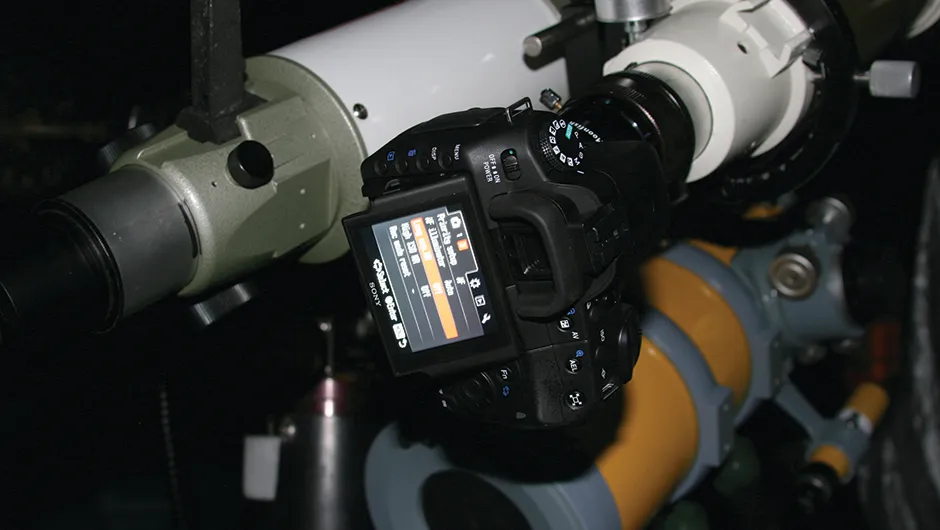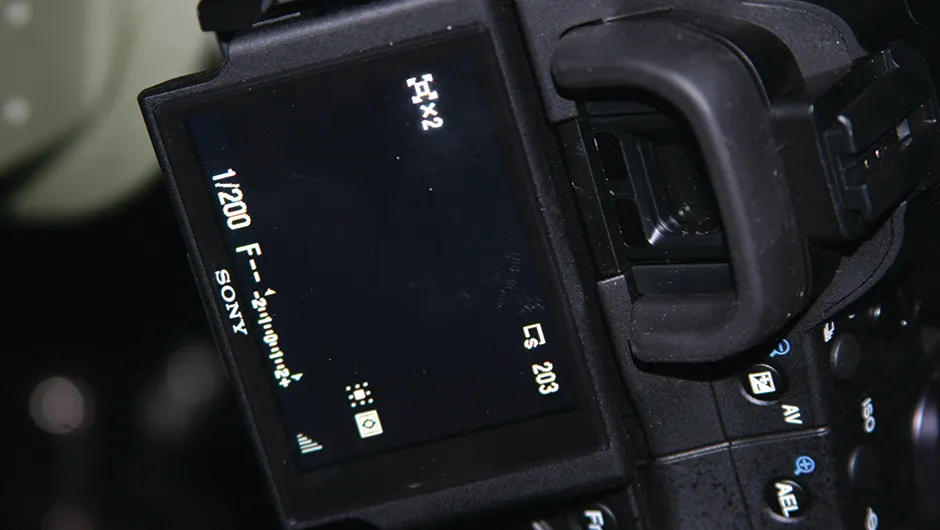There are plenty of things tolike about the Sony A350. In particular, we loved the fact that you could tilt the LCD review screen out from the body of the camera.
The best view you’ll get of an object is when it’s high up in the sky and visible through less of the Earth’s turbulent atmosphere.
If you’re using a refractor telescope this means that the back of the camera – the bit with all the information on it – will be difficult to look at.
The Sony’s tilting screen goes a long way to alleviating this issue.
We also liked the controls on the A350 and found them easy to navigate, although the menu features black text on white panels, not an ideal combination for night work.
The live view function was enabled by sliding a switch at the side of the optical viewfinder.

Unfortunately, the way it worked was a bit primitive: you have to centre the object you want to focus on before zooming in.
We also found it to be the least sensitive live view.
When you turn the A350’s live view on, a small mirror in the optical viewfinder housing tilts so that the incoming light path is redirected from the viewfinder onto a dedicated live view sensor.
This means that the view you get is not being sent from the camera’s main imaging sensor.
This has many advantages for general photography, but for astrophotography it doesn’t help much.
Indeed, the extra live view technology inside the optical viewfinder housing made the camera harder to use without the live view enabled – we found the reduced view through the viewfinder tricky to use when targeting faint astro objects.
The A350’s lens mount is functionally identical to the Konica-Minolta lens mount, so we used a Minolta-to-T-thread adaptor ring to fit it to our scope.
The biggest issue we had with the A350 was camera noise.
Long exposures showed chroma and luminance noise (colour and light artefacts) at low ISO settings.
The Sony’s noise-reduction system gets to work on this, but appears to smear detail at high ISO settings.
High ISOs mean higher noise and less tonal variation in an image.
It’s best to keep your ISO levels low if possible, something that’s easy for a bright object such as the Moon, but not so easy for faint deep-sky objects.

Image-stacking techniques can be used to reduce the noisy effect of using a high ISO setting.
The camera also exhibits a lot of amp glow, generating an unevenly lit field of view across the image.
The camera’s dark-frame subtraction goes some way to removing these effects, but this will affect the overall quality of a long-exposure image.
Our 15-minute dark test frames (exposures taken with the lens cap on) showed the corners of the image frame to be almost white.
One plus point is that the noise reduction facility, which smears detail at high ISOs, doesn’t appear to be applied to the A350’s RAW image files.
Price: £509.00
Supplier: Sony
Telephone: 0207 365 2947
Website:www.sony.co.uk
A version of this article first appeared in the May 2009 issue of Sky at Night Magazine
